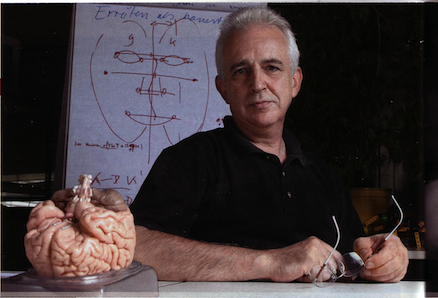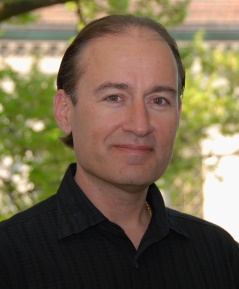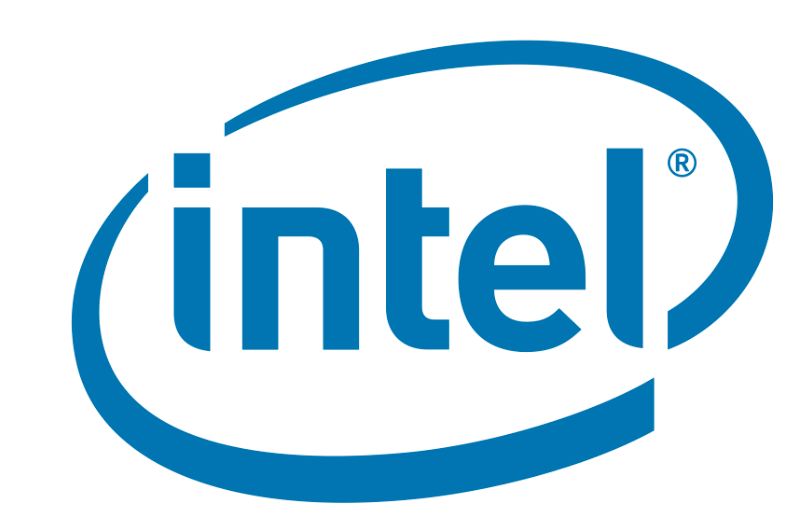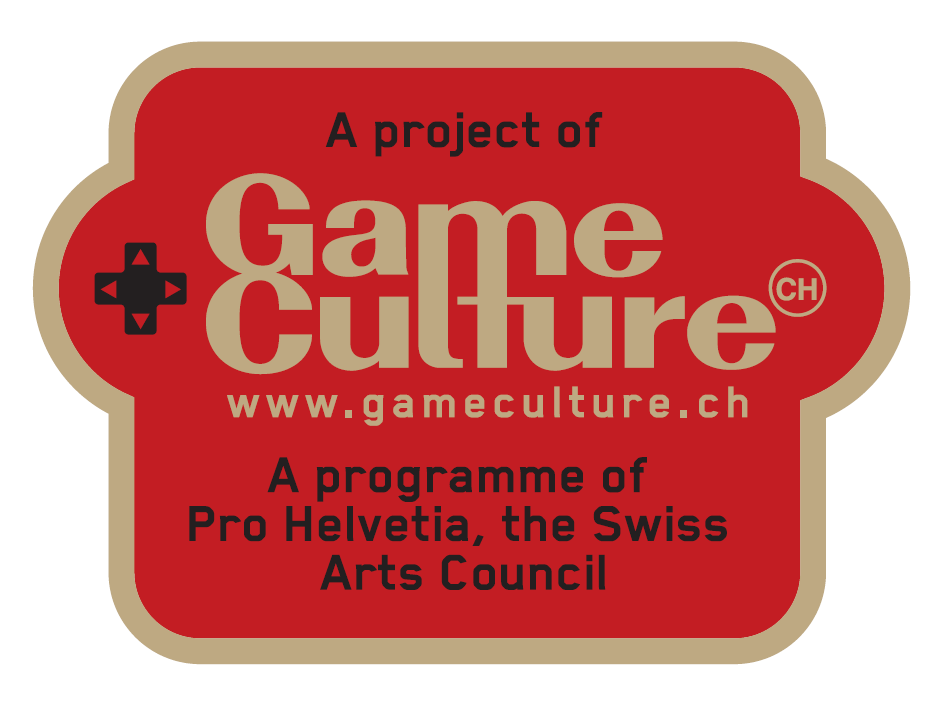SCA 2012 Keynote Speakers & NVIDIA Best Paper Award
Keynote Speakers
Prof. Dr. Karl Grammer (University of Vienna)

Virtual Ethology and Behaviour Modelling
Early ethology started to abstract the behavior of animals and reduce it to simple cybernetic models. This approach was widely accused of "oversimplification". Another problem was that there were no means to test the functional properties of such models, and therefore the models remained on a descriptive level. But this approach is still valid, and as we will show useful for the analysis of human behavior, because of the appearance of new analysis methods and computing tools which allow us to leave the mere descriptive level of ethological modeling and test human expressive behavior in virtual worlds.
In this context the notion of embodiment plays a primary role - models should not only be computer simulations, they also should correspond to bodily structures which can act in virtual worlds. The reason for this is that there is no cognition without a body and vice versa - the body basically determines the way we think (Pfeifer & Bongard, 1999, Grammer & Oberzaucher, 2008). And we know from robotics that very simple cognitive algorithms can create very complex behavior outputs depending on the physical construction properties of its body. When trying to create the artificial we can gain new insights into the natural. The first part will deal with the construction of expressive virtual embodied agents and what we learned from this.
Then I will demonstrate the use of expressive embodied agents in a variety of scientific contexts like FMRI studies on emotion and body perception (Moser et.al., 2007, Fladung et al, 2009). This then will be extended to the creation of new and controlled stimuli for expression research (Hess et al, 2009, Glauert et al, 2009) in various disciplines. Moreover when motion is added to virtual stimuli various aspects of communication and the internal control architectures can be studied (Grammer & Oberzaucher, 2006, Kopp et al, 2008, Boukricha et al, 2009).
The delineation of control architectures for the agents is central in all these approaches . In order to do so we need the observation of humans in real world everyday activities in ecologically valid situations and create frameworks for the structure of everyday expressive behavior. These theoretical control architectures then can be used to simulate theoretical approaches for instance from appraisal and emotion theory and test them against reality.
Prof. Dr. Karl Grammer born 1950 in Mühlacker. He studied zoology, anthropology and physics at the Ludwig-Maximilians-University, Munich. 1982 doctoral degree in biology at the Research Institute for Human Ethologie of the Max-Planck-Society on the development of social strategies among preschool children. 1985 Assistant professor at the Max-Planck Research Institute for Human Behavior. 1991 Professor at the Formal- und Naturwissenschaftliche Fakultät of the University of Vienna focusing on Human Biology. 1994 Research fellow at the University of Kyoto /Insitute for Zoology on automated methods for behavior analysis.1991 - 2009 scientific and administrative director of the Ludwig Boltzmann Institute for Urban Ethology in Vienna, Austria. Since 1991, lecturer at the University of Vienna and the Vienna University of Technology. 2005-2006 Research Fellow at the Center for Interdisciplinary Studies (ZiF) Bielefeld Germany . Research Group, "Embodied Communication in man and machines". Since 2010 senior lecturer at the University of Vienna. 2005 PI of the USDP project funded by DARPA. Since 2010 PI for the FP7 large scale integrated project VANAHEIM. Research fields: Human communication, automated behavior analysis. Special expertise: Motion analysis, behavior annotation, ethological methods.
Prof. Dr. Markus Gross (ETHZ & Disney Research Zurich)

Challenges in Computer Animation - From the Virtual to the Real
The field of computer animation continues to provide a variety of technologies to bring virtual characters to life, to support the creation of animated movies, and to enable stunning visual effects in life action films. Yet, there remain a couple of grand challenges for research, which to the present day remain largely unsolved. Such challenges include effective in-betweening in classical 2D animation, the search for more expressive looks in 3D animation, art directable physical animation, or uncanny valley effects in facial animation. More recently, we can also observe a trend towards the synthesis of real 3D animatable objects with controllable mechanical and physical properties. In this talk, I will walk you through some of the grand challenges in computer animation and I will highlight some examples of how we are approaching them at both Disney Research and ETH Zurich.
Markus Gross is a professor of Computer Science at ETH Zurich, founder and head of the Computer Graphics Laboratory and the director of Disney Research Zurich. He has worked in graphics and related topics for more than 20 years. His research interests include physical animation, image generation and display, geometric modeling, and video processing. He has published more than 300 scientific papers and he holds many patents on graphics and visualization technologies. Gross serves on the scientific advisory boards of various international research organizations. He is a fellow of the EUROGRAPHICS Association and a member of the German Academy of Science Leopoldina as well as of the Berlin-Branderburg Academy of Sciences. He received the SWISS ICT Champions Award in the category People in 2011.
NVIDIA Best Paper Award
This year, NVIDIA is sponsoring the best paper award. The NVIDIA Best Paper Award will be provided to the paper that obtains the best score during the review process and attracts most attention at the conference. The award winner will be choosing either a Quadro 6000 or a "Cardhu" development kit for the Tegra3 mobile processor as the prize. The runner-up award is sponsored by Intel. An SSD will be provided to the winner as a prize.
Below are the results of the awards along with papers receiving honourable mentions. These papers will be invited to have extended versions appear in a TVCG Special Section.
| Best Paper:
Multiphase flow of immiscible fluids on unstructured moving meshes Marek Krzysztof Misztal (Technical University of Denmark), Kenny Erleben (University of Copenhagen, Denmark), Adam Bargteil (University of Utah), Jens Fursund (Alexandra Institute, Denmark), Brian Bunch Christensen (Alexandra Institute, Denmark), Andreas Baerentzen (Technical University of Denmark), Robert Bridson (University of British Columbia) |
| Best paper runner-up: Efficient Simulation of Example-Based Materials Christian Schuhmacher (Disney Research Zurich / ETH Zurich), Bernhard Thomaszewski (Disney Research Zurich), Stelian Coros (Disney Research Zurich), Sebastian Martin (Disney Research Zurich), Robert Sumner (Disney Research Zurich), Markus Gross (Disney Research Zurich and ETH Zurich) |
| Honorable mentions: Physically Plausible Simulation for Character Animation Sergey Levine (Stanford University), Jovan Popovic (Adobe) Mass-Conserving Eulerian Liquid Simulation Nuttapong Chentanez (NVIDIA PhysX Research), Matthias Mueller (NVIDIA PhysX Research) Tiling Motion Patches Manmyung Kim (Seoul National University), Youngseok Hwang (Seoul National University), Kyunglyul Hyun (Seoul National University), Jehee Lee (Seoul National University) Efficient Collision Detection for Brittle Fracture Loeiz Glondu (INRIA Bunraku, IRISA), Sara C. Schvartzman (URJC Madrid), Maud Marchal (INRIA, INSA Rennes), Georges Dumont (ENS Cachan / IRISA Bunraku), Miguel A. Otaduy (URJC Madrid) |
| Best Posters: Data-Driven Full Body Action Recognition J. Baumann, S. Eichert, R. Wessel, B. Krüger, A. Weber (Fraunhofer FKIE, Bonn University) Deformation-Aware Voronoi Fracture S. C. Schvartzman, M. A. Otaduy (URJC) |
















